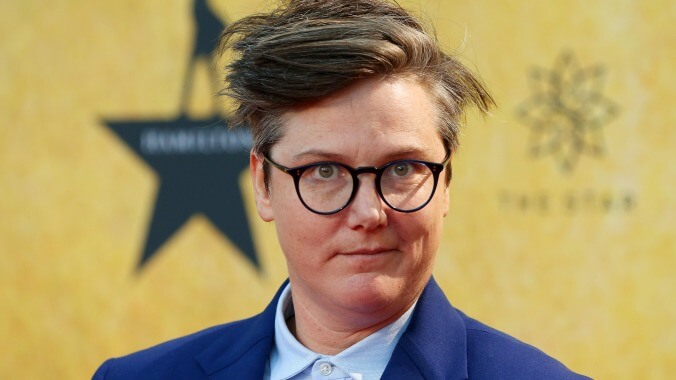Hannah Gadsby's Picasso exhibit is getting roasted by art critics
The Brooklyn Museum's "It’s Pablo-matic: Picasso According to Hannah Gadsby" is being routed online

“It’s Pablo-matic: Picasso According to Hannah Gadsby” has been Pablo-matic from the start. The comedian was criticized for launching an exhibit at the Brooklyn Museum, where Elizabeth A. Sackler (of Purdue Pharma infamy) apparently sits on the board of trustees. “Doesn’t matter what cultural institution you work with in America, you’re going to be working with billionaires and there’s not a billionaire on this planet that is not fucked up. It is just morally reprehensible,” Gadsby lamented to Variety, nevertheless moving forward with the exhibit.
After having criticized Picasso in their lauded Netflix special Nanette, Gadsby was tapped to co-curate an exhibition to mark the 50th anniversary of the artist’s death. The show examines Picasso’s “complicated legacy through a critical, contemporary, and feminist lens, even as it acknowledges his work’s transformative power and lasting influence.” The exhibit consists of Picasso’s work with the work of female artists, with the addition of Gadsby’s commentary.
Reviews of the show (which opens on Friday) are, shall we say, not kind. Gadsby’s quips tacked to Picasso’s art “function a bit like bathroom graffiti, or maybe Instagram captions,” writes New York Times reviewer Jason Farago, who dismisses Gadsby’s commentary as “juvenile.” ARTnews’ Alex Greenberger observes that Gadsby’s quotes are “larded with the language of Twitter,” highlighting the label above a minotaur print: “Don’t you hate it when you look like you belong in a Dickens novel but end up in a mosh pit at Burning Man? #MeToo.”
There is no debate about Picasso’s misogyny or any of the more unsavory (and well-documented) aspects of his character. Instead, it’s the apparently facile way Gadsby (with co-curators Catherine Morris and Lisa Small) has chosen to frame the show. The female artists featured do not include female Cubists, women inspired by Picasso, or the female artists Picasso was actually involved with in his life. Instead, their work “[seems] to have been selected more or less at random” writes Farago, while Greenberger notes that many of these pieces from female artists “have almost nothing in common, beside the fact that they are all owned by the Brooklyn Museum.”
The scathing criticism of the exhibit has been met with some schadenfreude online, particularly with the subset of folks for whom Nanette didn’t land. “Still thinking about that perfect @jsf piece on Hannah Gadsby’s Picasso show. Such a sharp evisceration of the corrosive effect a certain strain of meme-y social justice has had on culture and criticism. If people’s receptiveness means we can finally move past that, I’m thrilled,” The New Republic’s Natalie Shure wrote on Twitter. And of course, some people just like a good, well-written take down: “So so so happy that Hannah Gadsby made the Pablo-matic (lmfao) exhibit because the reviews of it have been the best most fun culture writing in a while imo!!!!!,” tweeted writer Sophia Benoit.
Agree or disagree (and perhaps you’ll have to visit the Brooklyn Museum to decide), the criticism of Gadsby’s criticism is lethally sharp. “Not long ago, it would have been embarrassing for adults to admit that they found avant-garde painting too difficult and preferred the comforts of story time. What Gadsby did was give the audience permission—moral permission—to turn their backs on what challenged them, and to ennoble a preference for comfort and kitsch,” Farago writes of Nanette, later adding, “The function of a public museum (or at least it should be) is to present to all of us these women’s full aesthetic achievements; there is also room for story hour, in the children’s wing.” You can read the full piece here.